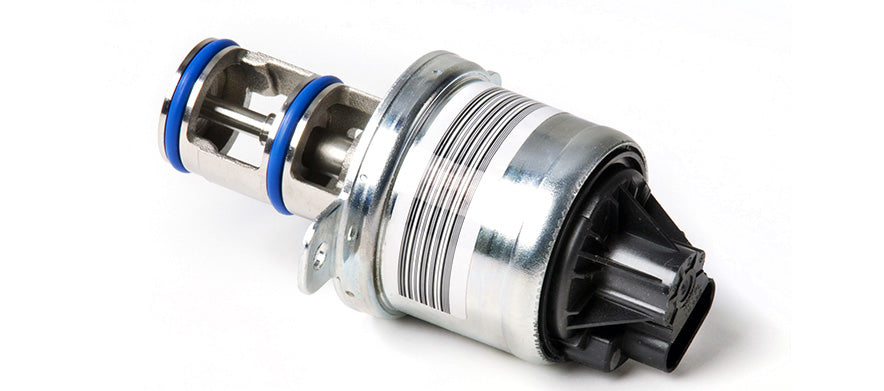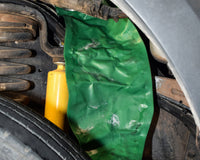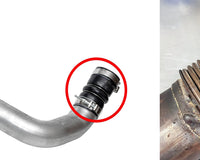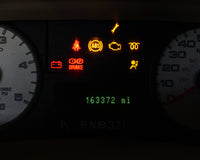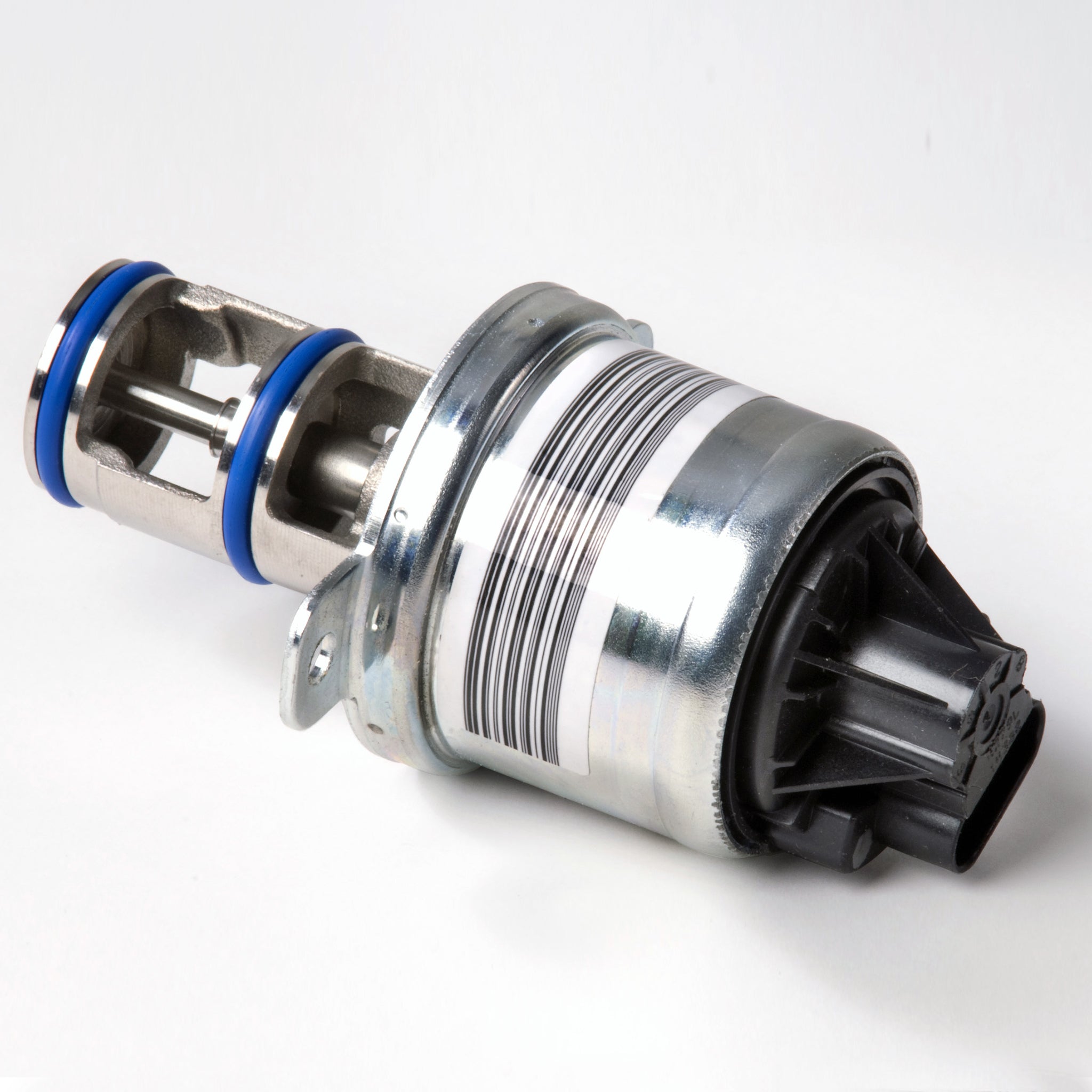What Is An EGR Valve?
EGR valves are a common point of failure on most modern diesel engines. When the valve sticks, it triggers the check engine light and decreases power. Simply replacing the valve isn’t enough to protect your engine, since failure is usually caused by problems with other emissions, coolant and lubrication components. Why does this part fail, and what can you do to keep it from failing?
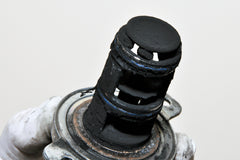
What Does My Engine’s EGR System Do?
Nitrous oxides (NOx) are gases formed in the combustion chamber when heat forces together nitrogen and oxygen atoms from the air. These gases form ground-level ozone, which causes breathing problems, as well as acid rain and smog. The Exhaust Gas Recirculation (EGR) system mixes exhaust gases into the air passing through the intake. Diluting the air/fuel mixture lowers combustion temperatures, reducing the formation of NOx. While this sounds like it would have a big impact on performance, there is still plenty of air left over for combustion. Even an early, inefficient EGR system reduces power by no more than 3%.
The amount of exhaust gases entering the intake is controlled by the EGR valve. These gases are too hot to introduce directly into the intake, so they pass through a cooler on the way to the valve. These coolers pass the exhaust through a chamber full of piping connected to the engine’s cooling system.
 What Problems Can I Expect from My Engine’s EGR Valve?
What Problems Can I Expect from My Engine’s EGR Valve?
On diesels, this valve usually fails when it becomes clogged or overheated and sticks open. This reduces power and increases the heat inside the EGR system. Having too much exhaust gas entering the intake decreases performance causes rough idling and makes the engine prone to stalling.
What Causes EGR Failure?
Soot buildup is common on engines that idle for long periods of time, and those that use poor quality fuel. Over time, this buildup can keep the valve from closing. Shutting off your engine when parked and sticking to diesel with a high Cetane rating can reduce soot problems. Turbo problems on Cummins diesels are commonly caused by soot buildup. If you have a failing valve, it’s a good idea to check for buildup in the turbo.
Failing seals, a bad actuator, and bad wiring can keep your diesel’s EGR valve from functioning. This increases stress on the entire EGR system.
Overheating will cause valves to stick open. This is a major problem on Powerstrokes built-in 2003, due to the engines undersized exhaust gas cooler. The EGR cooler was replaced with a larger unit In the middle of the 2004 model year. This stopped most heat-related valve problems, but this new design is more prone to cracking. Failure of this part can cause EGR and coolant problems. Other engines can experience similar failures if the cooler is cracked or clogged.
The oil cooler in 6.0l Powerstroke diesels uses an oil-to-water system, transferring heat from the oil into the engine coolant. The coolant passages are narrow. If any debris that are in the coolant system, they can clog the cooler. To add to this problem, the cooler sits in the valley of the engine, increasing cooler temperatures and sludge formation. Once the oil cooler clogs, the EGR cooler is cut off from its coolant supply, leading to overheating. Oil cooler failure can also lead to much other lubrication and cooling-related problems, including head gasket and injector failure. Likewise, if the EGR cooler’s passages clog or split, it can lead to overheating problems.
Coolant starvation can cause massive temperature differences across the cooler, increasing stress from expansion and contraction. These forces can crack the bulkheads on the ends of the cooler body. These cracks create coolant leaks, allowing coolant to enter the intake. Small coolant leaks first show up as white exhaust smoke, created by coolant turning into steam as it passes through the engine. Large leaks can cause hydrolocking, damaging the engine. Like Powerstroke coolers, OEM Cummins and Duramax coolers have narrow coolant passages that clog easily. However, this often isn’t a problem with the EGR equipment itself, but a problem upstream with the coolant system. A failing water pump, low coolant level, or dirty coolant is often the root cause of cooler failure.
Should I Delete the EGR System from My Truck’s Engine?
An EGR delete system isn’t really a system, it’s just a plug that goes over the EGR port, preventing exhaust gases from passing through the valve and cooler to the intake. While it may temporarily solve some EGR-related problems, this is little more than a band aid.
Blocking this system affects emissions controls, violating Federal law. It also turns on the check engine light and triggers error codes in the ECU. This makes it obvious that the system has been modified when you have your truck emission tested. It also means you won’t be able to use the check engine light to notify you of engine issues when they first appear. While it is possible to use tuners to delete EGR errors, this method isn’t foolproof.
Since the EGR system is still part of the coolant system on modified diesels, it can still fail. Failures in the EGR system are usually connected to problems with the cooling or lubrication system. What may seem like an emissions-related problem is actually a failing water pump or oil cooler. In our experience, most EGR failures on 6.0l Powerstrokes start with a bad oil cooler. On other engines, EGR failures are usually connected to soot and coolant issues. Blocking the EGR system doesn’t do anything to fix these problems.
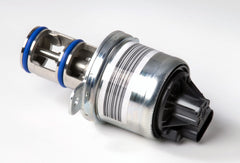 How Can I Solve My Diesel’s EGR Issues?
How Can I Solve My Diesel’s EGR Issues?
Using quality fuel, keeping your EGR clean, and staying on top of maintenance will help. However, if you want to have a truly trouble-free system, you should upgrade your emissions and coolant components.
Our H-Core coolers use large, helical tubes to transfer exhaust through a coolant bath, maintaining flow. This improves cooling performance and prevents failures that can lead to coolant leaks and EGR system failures. We also make oil coolers for Powerstrokes that are externally mounted and have large diameter passages, solving the problems with the OEM cooler.
Bullet Proof Diesel has spent over a decade developing products that solve common failures in Ford, International, Duramax, and Cummins diesel engines. Our parts don't just protect high power modified engines, they also increase the reliability of stock engines. We give you two ways to use our parts on your engine. You can order the parts you want directly from our website, or you can contact one of our preferred installers. These shops have experience using our components, so you’ll have a trouble-free experience.

